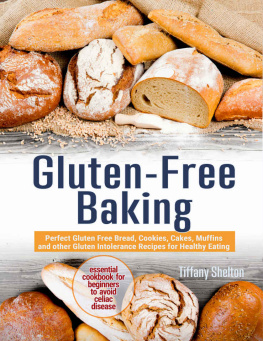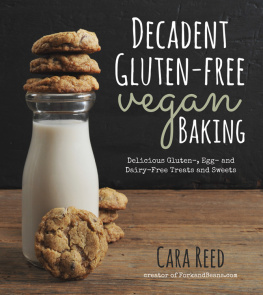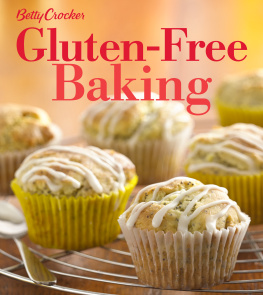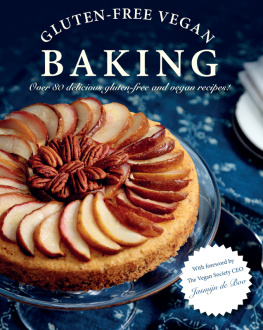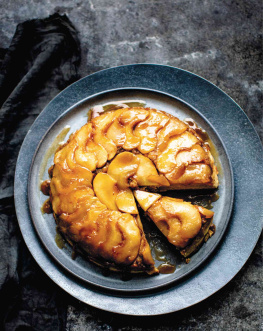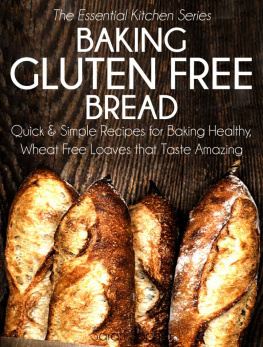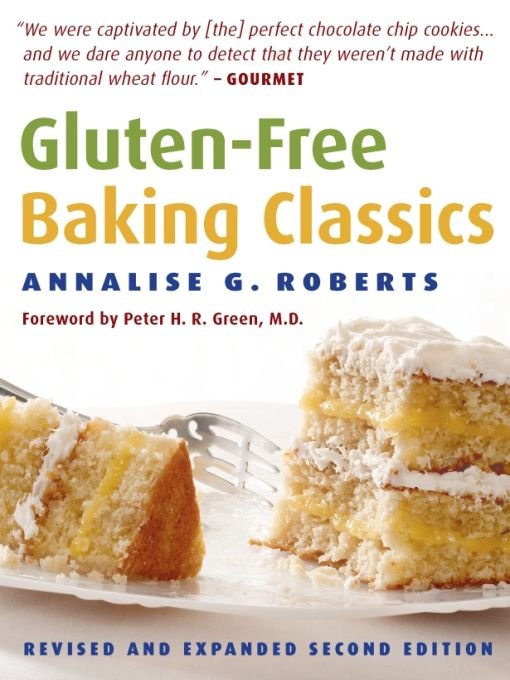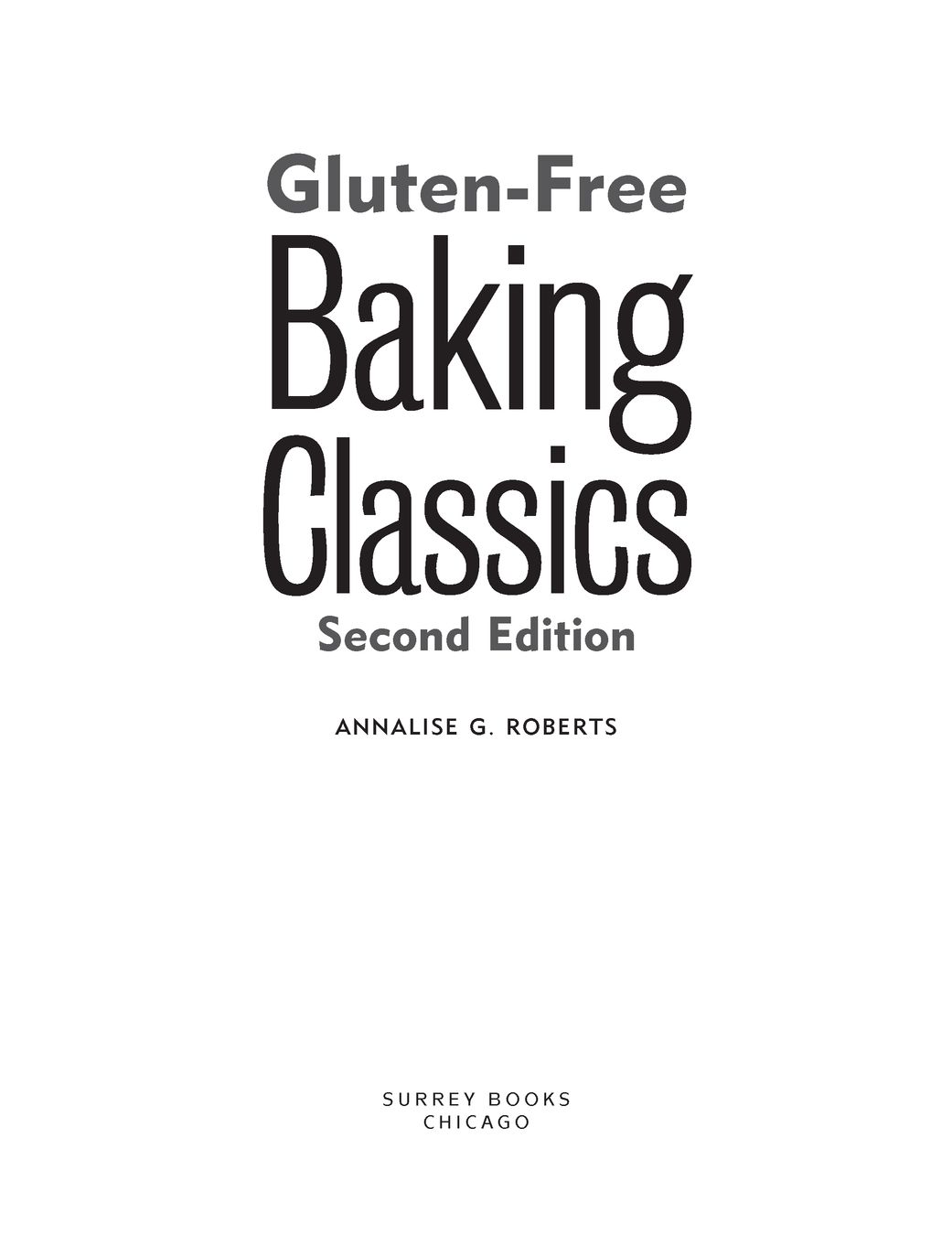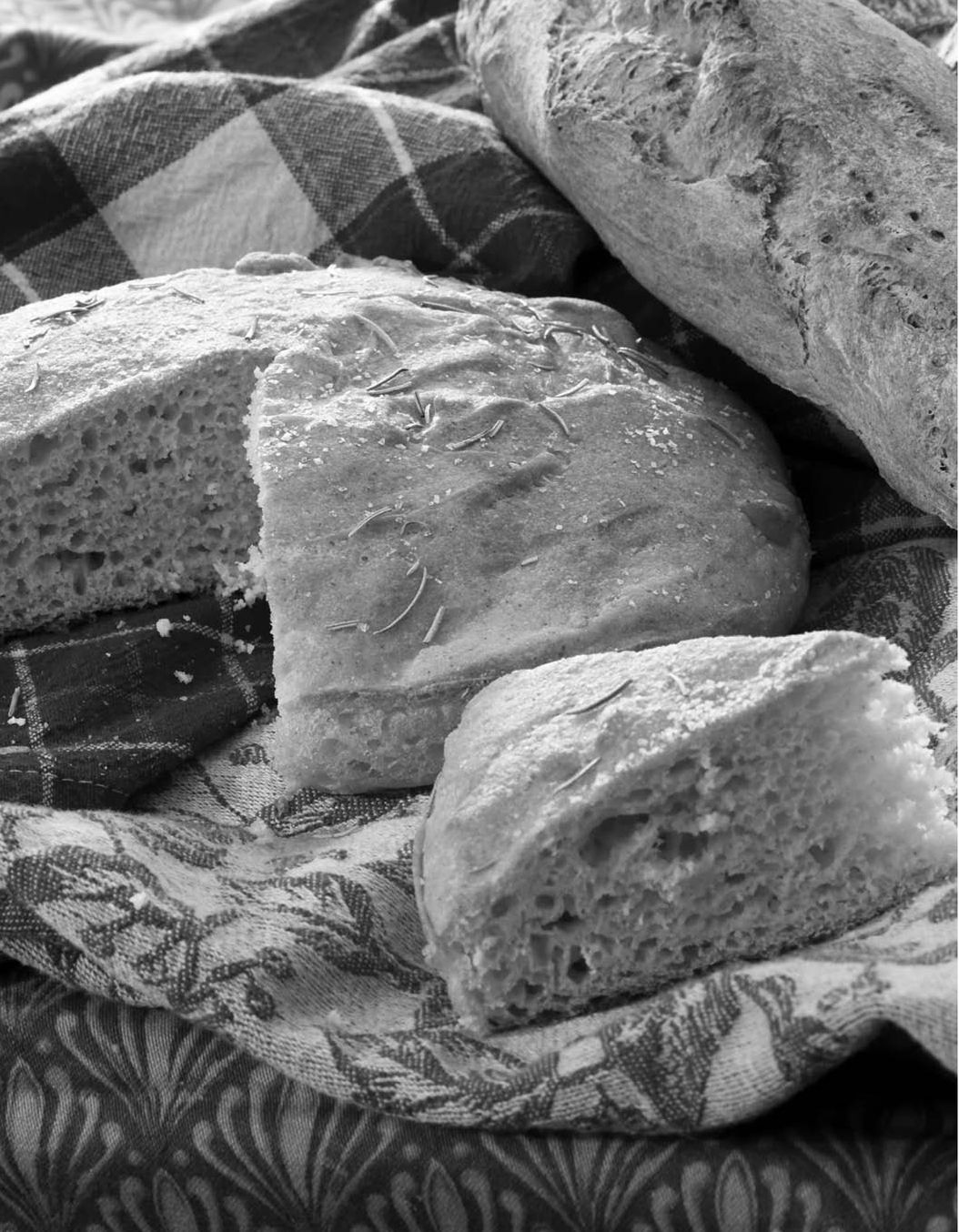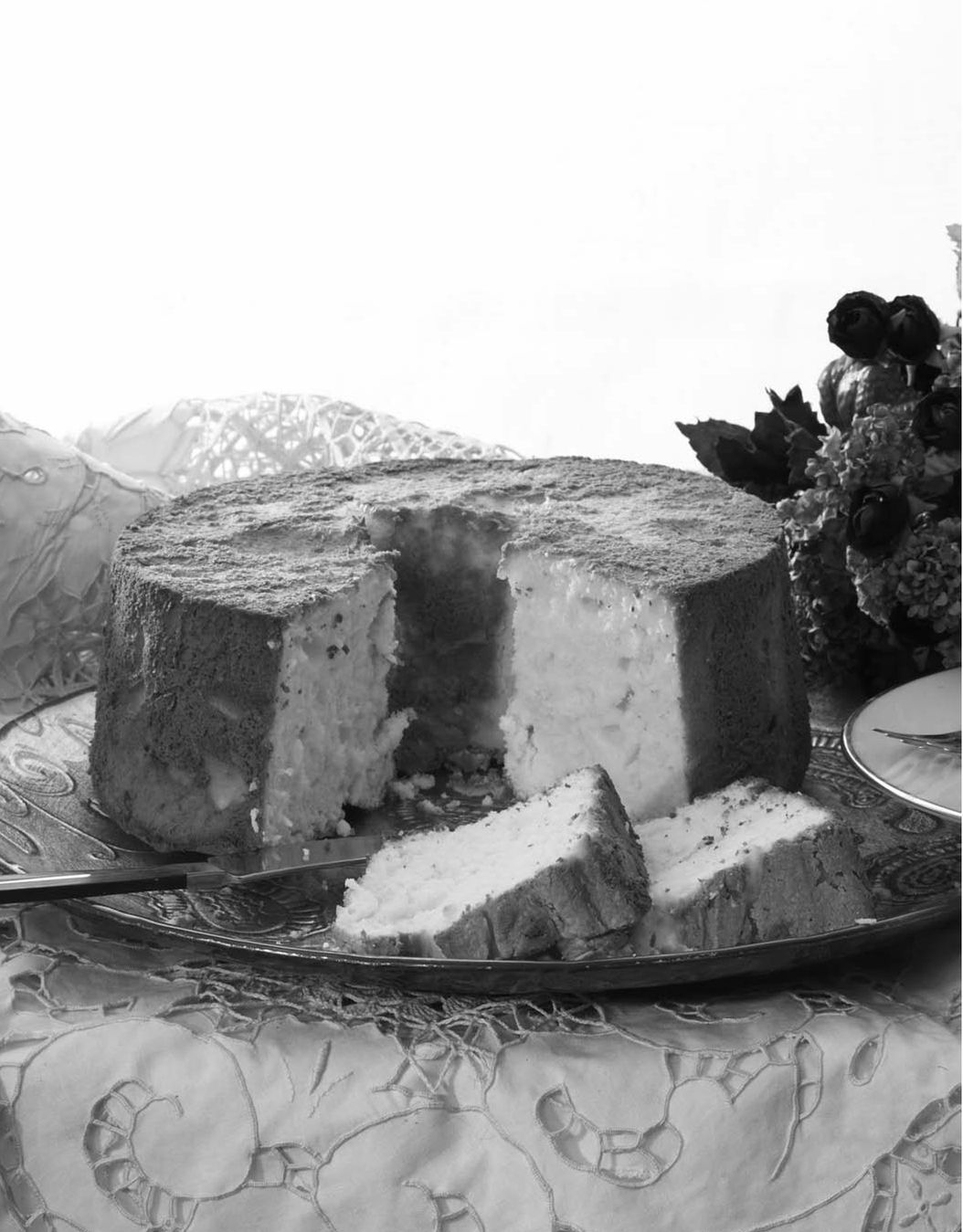Table of Contents
To Conrad
Who made it possible for me to take my own road not taken
ACKNOWLEDGMENTS
Love and thanks to my sister Claudia for joining me in bringing our Food Philosopher dreams to life.
Thanks to Douglas Seibold, president of Agate Publishing for all his encouragement and for giving me the opportunity to see this second edition come to life.
Thanks to Susan Schwartz, who published the first edition of this book, for seeing the value and potential of my work.
Thanks to Tom DiBella, the food photographer who gave his exceptional creative skills and technical talent to this project. Your dedication touched my heart.
Thanks to Ruth Reichl and her staff at Gourmet Magazine who tasted my cupcakes and cookies and gave me a chance to share them with their readers.
Thanks to Shelly, David, Jack, and Rivkayour caring made all the difference.
A giant gluten-free thank you to my many willing tasters, especially Alex and Bradford; Herb and Ev; Tim, Cory, and Monica; Don and Macie; Susan and Fritz Zeigler; Daria Ewanik; Mary and Greg Frazier; Carl Scariatti; Madhuri Shukla; the whole Loretti clan; the Krafts; and all the others I fed and questioned endlessly until I got it right.
Another huge thank you to my many willing field testers who offered up their time and kitchens to test recipes for this book: Shawn McBride, Jennifer Granich, Jennifer Cross, Monica Di Bisceglie, Amy Luczak, the Scheps family, Rebecca Armstrong, Jeanne Cobetto, Susan Riedinger, Sue Lampropoulos, Diana Gitig, Susan Goodstadt-Levin, Mary Jane Thomas, Patti Lou Smith, Ed Perell, Gayle Gorga, Nancy Shedrofsky, Pam Philips, Maryse Lalonde, Jason Dietel, Vicki Hunt and her family, and Rita Yohalem.
To Evan Fogelman for all his enthusiasm, support, and efforts on my behalf.
To Sean Budlong, my Website wizard, for all of his hard work and caring.
To Marj Scariati and Keum Park, my caring, self-sacrificing intellectual property support team.
To Dr. Peter Green and Ann Roland Lee at Columbia University, whose efforts and work on gluten intolerance have guided me.
And a heartfelt thanks to the many others who have cheered me on and supported my writing and work.
NOTES ON THE SECOND EDITION
THE GLUTEN-FREE EXPERIENCE has changed a great deal since I started writing about food and teaching gluten-free cooking and baking classes. Supermarkets, restaurants, and the mass media have all begun to embrace the concerns of those who are gluten sensitive and bring them out into the open. In my classes, I see more and more people who say they are avoiding wheat and gluten because of arthritis, headaches, ADHD, depression, pregnancy problems, and an incredible array of autoimmune ailments, including fibromyalgia, lupus, multiple sclerosis, and thyroid disease. Many have never been tested for celiac; many do not even care if they have it. They just know they feel better when they dont eat wheat.
There is something to be said for thinking about gluten sensitivity as if it were on a spectrum, with celiac (the most severe) on top and various levels of intolerance below. I have come to believe that most people on the planet would be better off if they ate less wheat and gluten, and in many cases, avoided it entirely. Every celiac I meet, it seems, has an intriguing history of family members with ailments that look like, and maybe are, symptoms of gluten sensitivity. They all might feel better on a gluten-free diet.
When I wrote the first edition of Gluten-Free Baking Classics, my goal was to bring together all the basic, classic recipes for baked goods that individuals with celiac, gluten sensitivity, and wheat allergies might look for in one book. I wanted the recipes to be simple and foolproof, so people could depend on them and even use them as a foundation to convert their own family favorites, if they so desired.
In retrospect, I have to admit I missed a few things. Who knew that one day I would wake up and realize I had to have a doughnut? And then, I started to miss pecan raisin artisan bread, popovers, and hot cross buns studded with citron. I didnt even see it coming, but suddenly I was immersed in creating more recipes for baked goods I had to have. I even recreated my favorite birthday cake, a hazelnut layer cake with praline buttercream frosting and dark chocolate curls. Along with all this came requests from my readers and baking students for flour tortillas, bagels, challah, gingerbread men, fresh egg pasta, Irish soda bread, soft pretzels, banana muffins, and black and white cookies.
So this second edition evolved as all good things doover time. Before I knew it, I had 42 new recipes to add to my collection. I am proud to say that they are all are rigorously tested and delicious. I have also reworked and broadened Chapter 3: Getting Started to detail more about the art and science of gluten-free baking and to answer frequently asked questions. I hope this work, which has stayed true to my original goal of keeping all the recipes in one book, encourages you to take out your mixer and create some wonderful food memories for yourself, your family, and your friends.
Annalise Roberts, May 2008
FOREWORD
CELIAC DISEASE IS MORE COMMON than most people realize. In fact, it affects about 1% of the population, or close to 3 million individuals, in the United States. But less than 3% of those with celiac disease are correctly diagnosed: the majority is unaware that they even have this condition. A result of this massive under-diagnosis is that Americans with celiac disease suffer from inadequate support systems. There is a lack of reliable food labeling, a lack of awareness in the food and grocery industry, inadequate knowledge among professional chefs, and a general lack of availability of gluten-free products. This is in marked contrast to the rest of the world!
At the Celiac Disease Center at Columbia University in New York City, we are educating health care professionals and facilitating a great variety of research projects with the goal of increasing the quality of patient care. It is through physician, dietitian, and nurse education that more people with celiac disease will be correctly diagnosed, and thus their lives improved.
We also know that good-tasting, gluten-free baked goods are difficult to find and very often expensive for individuals who need to maintain a gluten-free diet. But this wonderful book by Annalise Roberts helps fill the void. Chock full of accurate information and excellent recipes, it will help decrease the burden of the disease. It is a very readable book, and the recipes taste great!
Peter H. R. Green, M.D.
Anne R. Lee, R.D.
Celiac Disease Center at Columbia University, New York City
www.celiacdiseasecenter.columbia.edu
CHAPTER 1
What Are You Hungry For?
Well, and what then shall I tell you, my Lady, of the secrets of nature that I have learned while cooking?...


